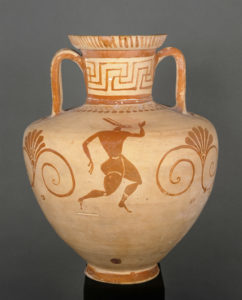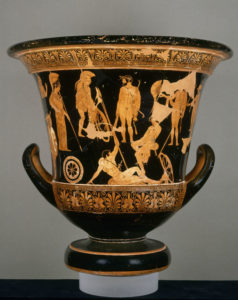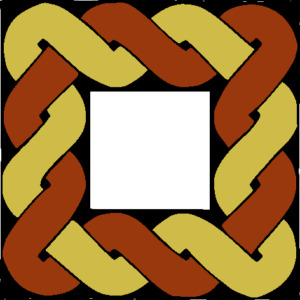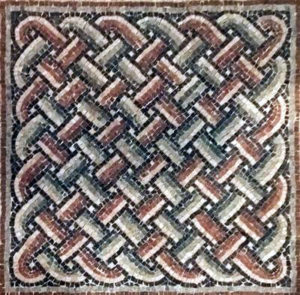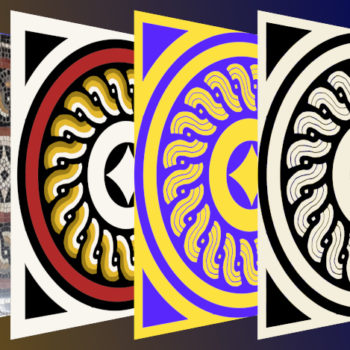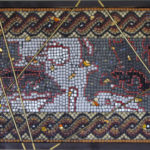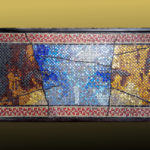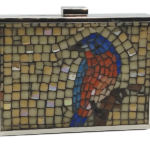Patterns time travel…
Meander Patterns
A Mycenaean Vase
Now, to illustrate this permanence of patterns, I first chose today this Mycenaean vase.

This vase is mostly decorated with simple black parallel bands on a lighter beige background. Right above the maximum diameter of the vase, the artist painted a double strand meander encased by two wide black bands.
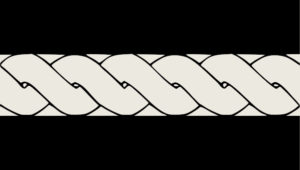
An early Christian mosaic
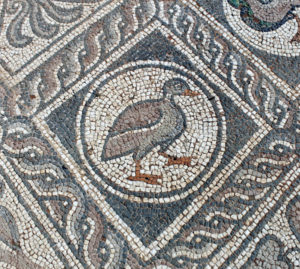
See for yourself…
This duck and the meander surrounding it were laid by a 6th century AD mosaicist, while the vase was painted around the 14th century BC. 2000 years separated the two craftsmen.
Think about it. The guy who laid the mosaic lived 1400 years before us. But the guy who painted the vase lived 2000 years before him. Consider on top of this that all Bronze age civilizations of the Mediterranean and Levant brutally ended around 1100 BC, you can but only wonder how this meander pattern was kept alive for so long.
Any idea on the subject ? Leave me a note.
In a future post I’ll bring other examples of this permanence of patterns.
